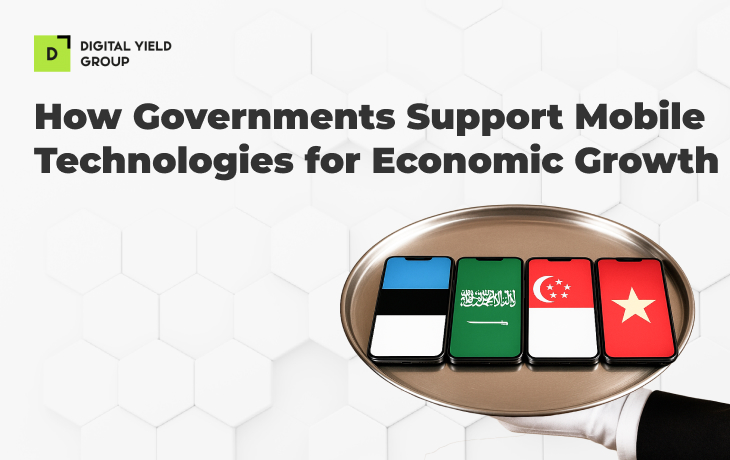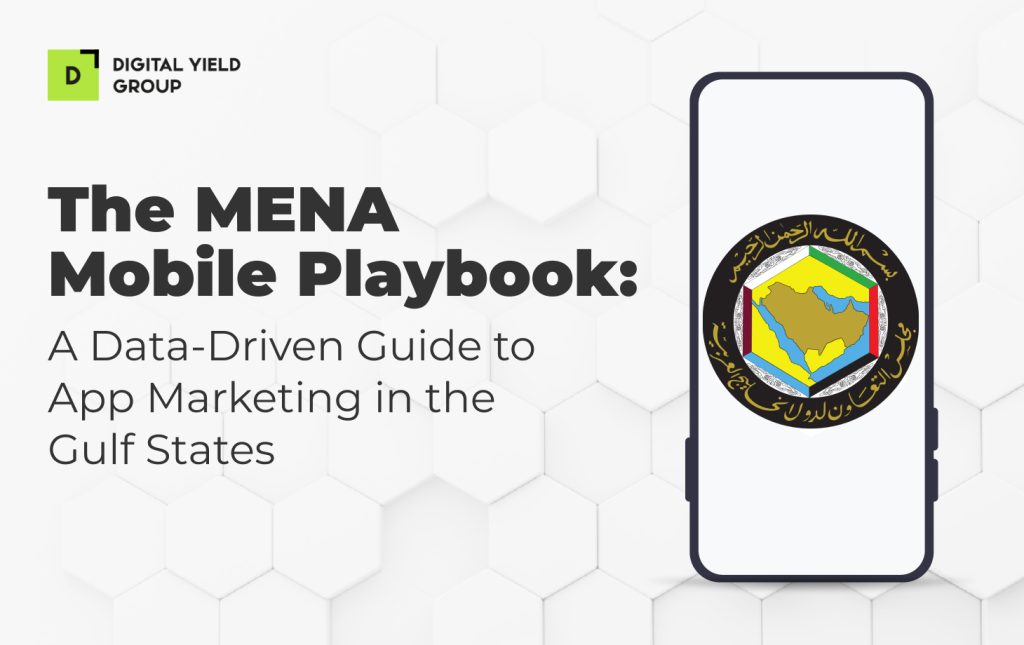A Global Look at Government Support for Mobile Technology

Across the world, mobile technology has become one of the most powerful tools governments have to shape their future. It’s driving new industries, unlocking access to essential services, and helping countries’ economies grow. In many national strategies, mobile systems are treated as core infrastructure, built into the earliest stages of digital planning. This report explores how Saudi Arabia, Vietnam, Estonia, and Singapore are turning mobile innovation into national advantage. Each country takes a different path, but the patterns are clear. Together, they offer a roadmap for how mobile can fuel growth, close gaps, and reimagine what digital progress looks like on a national scale.
I. Foundational Strategies: Initial Conditions and Policy Drivers
Saudi Arabia’s Vision 2030
Saudi Arabia’s mobile transformation is rooted in a broader national goal to shift the country’s economic foundation beyond oil. Vision 2030, launched in 2016, lays out a strategic roadmap for this transition, placing digital infrastructure and mobile-first development at the center of the Kingdom’s plans for growth, employment, and economic resilience. The strategy positions mobile technology as a key enabler across sectors from supporting small businesses to building new industries in tourism, logistics, fintech, and beyond. It also aims to grow non-oil government revenue to 265 billion US dollars annually, signaling the scale of the ambition.
Alongside Vision 2030, the Digital Government Strategy outlines how technologies like cloud computing and AI are being integrated into public systems. These initiatives reflect a comprehensive, tech-driven approach to governance and economic modernization, designed to reach across institutions, regions, and industries.
Vietnam’s Digital Leap
Vietnam’s digital transformation journey began with a rapidly growing e-commerce sector and already high smartphone and mobile-first internet usage. But beneath this growth was a pressing challenge: financial exclusion. In 2018, 69 percent of the population remained “unbanked”, limiting participation in the formal economy and slowing broader development goals.
To address this, the government launched the National Digital Transformation Programme (NDTP) in June 2020. It set ambitious targets for 2025, with a long-term vision to 2030. The plan includes expanding mobile payment adoption, accelerating 5G deployment, and building digital infrastructure to support businesses in industrial zones. The introduction of 5G is seen as a critical step toward economic modernization, with goals for nationwide coverage by 2030 and average internet speeds of 100 Mbps by 2025.
Another key initiative is the Mobile Money Program, piloted in 2021. It aims to reduce reliance on cash and improve financial access for millions. Together, these efforts create strong foundations for mobile-first business models. With high smartphone usage and growing digital literacy, the conditions are already in place for mobile services to scale quickly and reach users across the country.
Estonia’s e-Estonia
When Estonia regained independence in 1991, it inherited minimal infrastructure and limited resources. Fewer than half of all households had a phone line. But instead of rebuilding the past, the country made a deliberate choice to design its future around digital technology. In a pivotal early decision, Prime Minister Mart Laar turned down Finland’s offer of outdated analog telephone exchanges, opting instead to invest in digital systems and cellular networks. This mindset of leapfrogging rather than catching up has shaped Estonia’s trajectory ever since.
Astonishingly, by 1997, nearly every school in the country (!) had internet access. In 2002, Estonia introduced a national digital ID system based on a mandatory ID card, giving every citizen and resident access to secure online services. Mobile ID followed in 2007, allowing users to authenticate identity and sign documents using their mobile devices.
Today, long-term strategies like Digital Agenda 2030 and Estonia 2035 continue to guide digital development. These frameworks support a vision of an open, innovative, and people-centered digital society – one that treats mobile infrastructure not as an add-on, but as a foundation for how government and daily life operate.
Singapore’s Smart Nation Initiative
Singapore’s digital journey spans decades, built on consistent long-term planning and investment. Starting in the 1980s with the Civil Service Computerisation Programme, the country moved through a series of structured roadmaps including IT 2000, iGov 2010, and eGov 2015, that helped establish Singapore as a digital-first, knowledge-based economy well before the global shift to mobile.
In 2014, Singapore launched the Smart Nation Initiative, a national strategy focused on using technology to improve quality of life, support economic development, and build an inclusive digital society. It is organized around three pillars: Digital Government, Digital Economy, and Digital Society. The next phase, Smart Nation 2.0, was introduced in late 2024 with a renewed emphasis on trust, growth, and community. A key part of this update includes S$120 million in funding to accelerate the adoption of artificial intelligence across sectors. At the same time, initiatives like the Digital Readiness Blueprint and SMEs Go Digital are expanding access to mobile tools, both by supporting small businesses and promoting digital literacy through education and outreach. Platforms like GoBusiness, developed by GovTech, are also helping entrepreneurs and mobile-first companies navigate the public sector. With access to more than 120 government e-services and tailored guidance, it reflects how Singapore’s digital strategy is built not only around infrastructure, but around usability, scale, and public value.
II. Mobile-First Opportunities: Fintech, E-commerce, and Smart Services
Across all four countries, government initiatives are actively creating space for mobile-first businesses to scale and thrive. These efforts go beyond infrastructure and reach into critical sectors like tourism, finance, healthcare, and logistics.
In Saudi Arabia, programs like the Pilgrim Experience are using mobile platforms to streamline services for millions of visitors. From e-visas to digital ticketing, the experience is increasingly built for smartphones. As 5G networks expand and mobile usage grows, more industries, especially e-commerce and digital banking, are adapting to meet rising demand for digital-first services.
In Vietnam, mobile innovation is seen as a lever for wider industrial modernization. The rollout of 5G is expected to support AI, IoT, and smart manufacturing, while programs like the Fintech Sandbox help bring mobile credit scoring and peer-to-peer lending to underbanked communities. These tools are expanding financial access and creating entirely new markets.
Estonia has built a digital ecosystem that is fully mobile-accessible. Citizens can vote, sign documents, pay bills, and manage healthcare from their smartphones. Services like Mobile ID and mParking reflect a deep commitment to convenience and digital trust. Estonia’s e-Residency program takes this further, offering global entrepreneurs the tools to establish and run mobile-first EU-based businesses from anywhere in the world.
In Singapore, mobile payments are integrated into everyday infrastructure. SimplyGo allows commuters to use phones or cards for transit, supporting a low-friction, cashless society. The country’s fintech ecosystem, supported by regulatory sandboxes and proactive policymaking, continues to push mobile banking, HealthTech, and logistics into new territory. Programs like SMEs Go Digital provide tailored support to businesses looking to adopt mobile tools for growth and efficiency.
Together, these national strategies show how mobile-first solutions can unlock broad-based economic value. By lowering barriers to entry, improving access, and digitizing entire service systems, mobile connectivity is helping industries evolve and giving mobile-first businesses more room to lead that transformation.
Conclusion
The global landscape of mobile technology development is profoundly shaped by strategic government interventions. The analysis of Saudi Arabia, Vietnam, Estonia, and Singapore reveals that while each nation’s journey is shaped by its own context and priorities, they share key patterns: long-term digital strategies, strong infrastructure investment, wide-scale digitalization of public services, workforce development, economic diversification, and deep collaboration between the public and private sectors.
At Digital Yield Group, these insights help guide where we focus and invest. We actively track emerging strategies, identify overlooked market gaps, and collaborate with forward-thinking partners to build the next wave of mobile-first innovation, where technology, policy, and business align to shape what’s next.
For businesses and policymakers alike, these case studies should reinforce that mobile advancement is a strategic foundation for future prosperity and competitiveness. Understanding how different countries approach these priorities offers a valuable roadmap for navigating complex transitions and unlocking the full potential of digital transformation.


